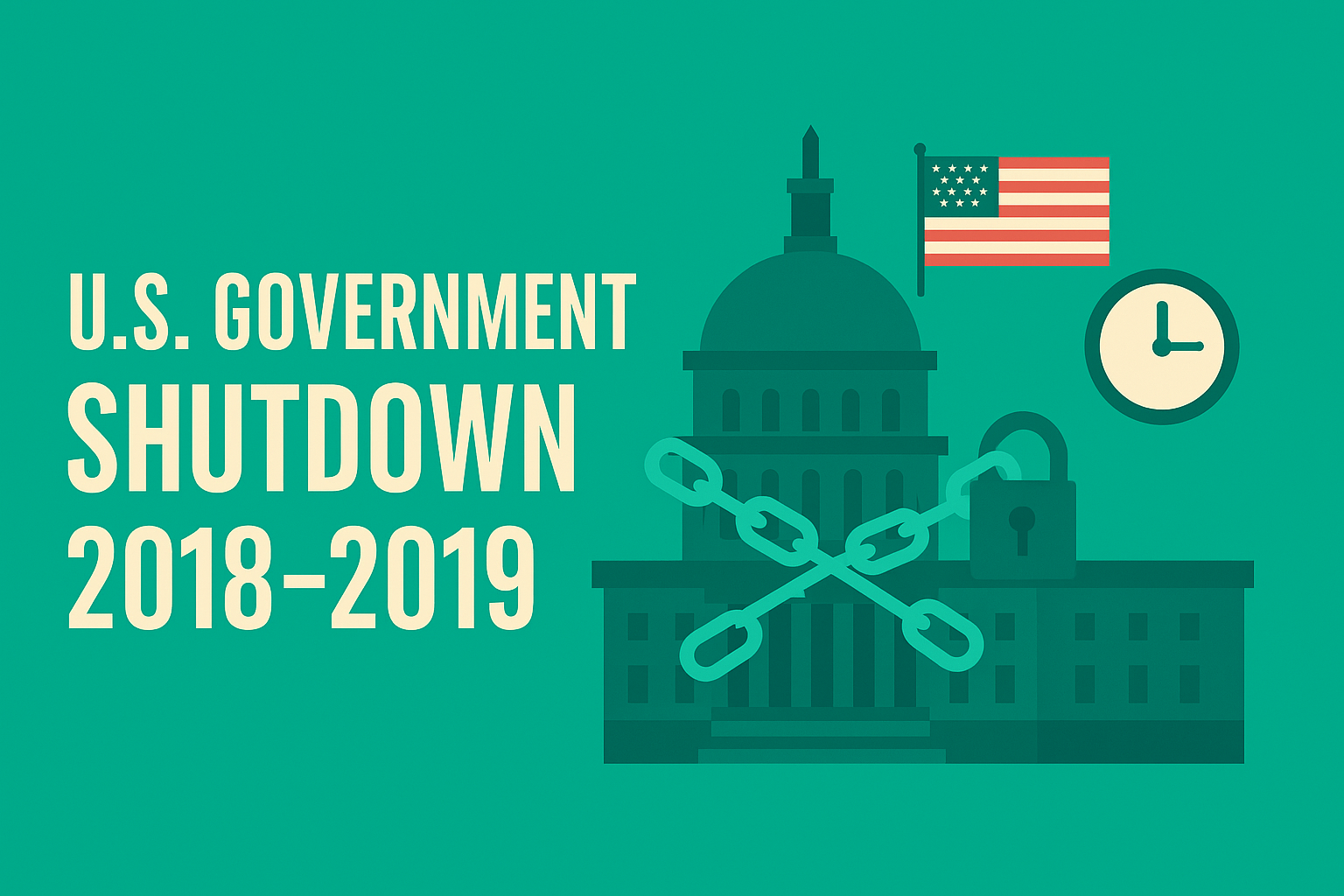Wrote by : Global Economist
Prologue: When the Lights Went Out in Washington
On December 22, 2018, as Christmas lights flickered across America, another set of lights began to dim — those of the federal government. For 35 long days, from late December into late January, the U.S. endured its longest-ever government shutdown.
It wasn’t just a budgetary dispute. It was a collision of ideologies, a test of political will, and a real-life demonstration of how partisan gridlock in Washington could ripple into the everyday lives of millions.
The Trigger: A Wall Divides More Than a Border
The immediate cause was a standoff between President Donald Trump and a divided Congress. At the heart of the dispute: funding for a wall along the U.S.–Mexico border.
- The White House demanded billions for the wall, framing it as essential for national security.
- Democrats, newly empowered in the House of Representatives, refused, arguing that the wall was costly, ineffective, and symbolic of deeper divisions.
Neither side blinked. And so, as the clock struck midnight on December 21, nine federal departments lost their funding.
The Human Cost: Lives Put on Hold
Numbers tell part of the story — but the lived experiences tell the rest.
- 800,000 federal workers were either furloughed without pay or forced to work without paychecks. Families skipped mortgage payments, relied on food banks, or maxed out credit cards.
- Contractors — unlike federal employees — had no promise of back pay. For many janitors, cafeteria staff, and IT support teams, the shutdown meant wages were simply gone forever.
- National parks and museums closed their gates. Trash piled up, wildlife monitoring stopped, and tourist towns lost vital revenue during the holiday season.
- Visa and passport processing slowed to a crawl, affecting students, travelers, and businesses.
- TSA officers, unpaid but still working, began calling in sick. The strain on air travel grew.
One federal worker told NPR at the time: “We serve the public every day. But right now, I feel abandoned by the very system I serve.”
The Economic Shock: Billions Lost
The Congressional Budget Office (CBO) later estimated that the shutdown cost the U.S. economy $11 billion in lost output, of which $3 billion would never be recovered.
- Consumer spending dropped as unpaid workers tightened their budgets.
- Small businesses that depended on federal contracts struggled to stay afloat.
- Investor confidence wavered, and the stock market reflected the uncertainty.
Economists warned that the crisis eroded America’s reputation for fiscal reliability — a dangerous signal for the world’s largest economy.
The Politics: A Deadlock with No Winners
For 35 days, neither side showed willingness to compromise.
- President Trump insisted he would keep the government closed “as long as it takes.”
- Democrats held firm, framing the shutdown as reckless hostage-taking.
Public opinion shifted as images of unpaid workers and shuttered services spread. Polls showed most Americans blamed the White House more than Congress.
Finally, on January 25, 2019, a temporary deal was struck — without wall funding. The government reopened, but the political scars remained.
Lessons from the Shutdown
- Continuing Resolutions Are Lifelines
Temporary funding measures can prevent such crises, but over-reliance shows deep dysfunction in budget negotiations. - Essential vs. Non-Essential Work Must Be Clarified
The shutdown revealed how much of government is “essential.” Air traffic control continued, but food safety inspections halted — exposing vulnerabilities. - Contractors Need Protection
Unlike federal workers, contractors had no guarantee of pay. The episode highlighted inequities in America’s public workforce. - The Cost of Polarization Is Measurable
The shutdown didn’t just harm workers; it undercut confidence in U.S. governance. When politics stops government, democracy itself is weakened.
Epilogue: Shadows That Still Linger
The 2018–2019 shutdown ended, but the memory remains vivid. For federal workers who stood in food pantry lines, for families who missed paychecks, and for businesses that never recovered, the scars run deep.
Perhaps the greatest lesson is this: government shutdowns are not abstract political dramas — they are lived crises.
As debates over funding continue in Washington today, the question remains: has America learned from its longest shutdown, or is history destined to repeat itself?


